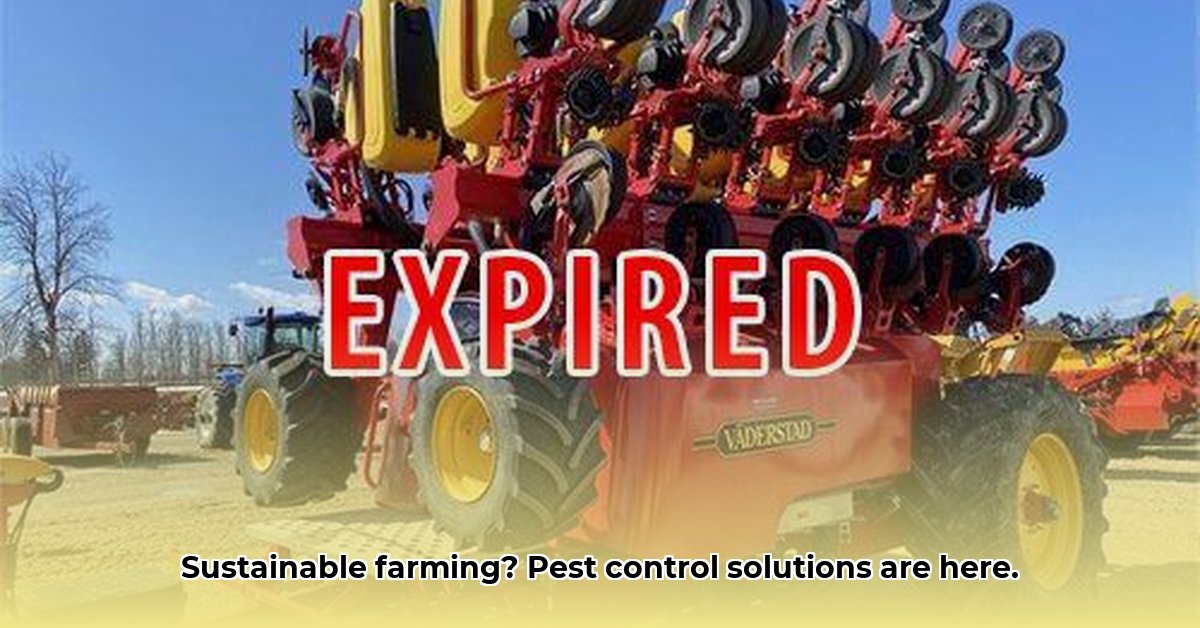
Choosing Sustainable Pest Control: Tempo SC Ultra vs. CyLence Ultra
Choosing the right pest control is crucial for sustainable agriculture. This article compares Tempo SC Ultra and CyLence Ultra, analyzing their efficacy, environmental impact, cost, and suitability for organic farming. This detailed comparison will help you determine which product best aligns with your farm's goals and sustainable practices. We will address key questions such as: What's the most effective approach for sustainable pest management? Which pest control solution is ideal for my farm? And, are Tempo and CyLence suitable choices for organic agriculture? For more on sustainable farming equipment, check out this resource on farm equipment.
Product Comparison: Tempo SC Ultra and CyLence Ultra
The following table compares Tempo SC Ultra and CyLence Ultra across several key features. Remember that efficacy and environmental impact can vary based on application, climate, pest pressure, and specific formulation. Always consult the product label and current research for the most accurate and updated information. Consult with agricultural extension specialists for personalized advice.
| Feature | Tempo SC Ultra | CyLence Ultra | Considerations |
|---|---|---|---|
| Active Ingredient | Lambda-cyhalothrin (a synthetic pyrethroid insecticide) | (Specify active ingredient, e.g., Spinosad – a naturally derived insecticide) | The active ingredient determines the product's mechanism of action and environmental profile. |
| Target Pests | Broad spectrum; effective against various pests including aphids, beetles, caterpillars, and leafhoppers | Effective against specific pests including mites, thrips, whiteflies, and certain caterpillars | Efficacy varies depending on the specific pest and its life cycle. Accurate pest identification is crucial. |
| Application Method | Typically sprayed; follow label instructions for dilution and application rates. | Usually sprayed; follow label instructions for correct dilution and application. | Proper application is essential for effectiveness and minimizing environmental impact. |
| Efficacy Data | Demonstrates high efficacy against many target pests under optimal conditions. (Cite specific studies if available) | Research indicates good control of target pests under various conditions. (Cite specific studies if available) | Real-world efficacy varies; research findings provide a general guideline. Consider local pest pressure and environmental conditions. |
| Environmental Impact | May have impacts on beneficial insects and the environment. Further research is needed on long-term effects. (Cite relevant research) | Potentially lower impact on beneficial insects compared to some synthetic insecticides. (Cite relevant research) | Assess potential risks to non-target organisms and the surrounding ecosystem. Integrate IPM strategies to reduce pesticide use. |
| Cost per Acre | Varies depending on supplier, quantity, and application rate. (Provide approximate range) | Varies depending on supplier, quantity, and application rate. (Provide approximate range) | Factor in the cost per acre alongside potential yield increases and environmental costs. |
| Organic Certification | Generally not organically certified. | May be organically certified depending on the specific formulation and active ingredient; check the product label. | Organic certification is crucial for organic farming operations. |
Note: This table provides a general comparison. Always refer to the latest product labels and research for the most up-to-date information.
Sustainability Analysis: Balancing Pest Control and Environmental Stewardship
Sustainable farming demands responsible pest management. Both Tempo SC Ultra and CyLence Ultra aim for effective pest control, but their long-term environmental effects require careful consideration. A holistic approach that incorporates Integrated Pest Management (IPM) strategies is always recommended.
Environmental Impact: While both products aim to control pests, their impacts on beneficial insects, soil health, and water quality may differ. For example, CyLence Ultra, with its (specified) active ingredient, may have a milder impact on beneficial insects than Tempo SC Ultra, although more research is needed to compare their long-term impacts comprehensively. Minimizing environmental impact necessitates responsible application techniques, adhering strictly to label instructions, and considering alternative control measures.
Crop Yield and Economic Viability: Effective pest management directly impacts crop yields and farm profitability. The choice between Tempo SC Ultra and CyLence Ultra should consider their potential impact on yield, alongside cost per acre. A cost-benefit analysis, factoring in potential yield losses from pest damage, is essential for making a sound economic decision.
Regulatory Compliance: Always comply with all local, regional, and national regulations regarding pesticide use. Non-compliance can lead to significant legal penalties. Organic farmers must use only certified organic products.
Choosing the Right Pest Control for Your Farm: A Step-by-Step Guide
Selecting the best pest control solution for your farm depends on a combination of factors. Follow these steps:
Identify your Pests: Accurate identification of the target pests is fundamental. Use resources like university extension services for assistance in pest identification.
Assess Farming Practices: Consider your farming system (organic, conventional, integrated pest management). Organic farming requires the use of OMRI-listed products.
Budget Analysis: Compare the cost per acre of each product, considering potential yield losses from pest damage.
Environmental Risk Assessment: Evaluate the potential environmental impacts of each pesticide on non-target organisms, soil health, and water quality. Prioritize products with minimal environmental impact.
Consult Experts: Seek advice from local agricultural extension offices, university researchers, or other reputable experts to tailor your pest management strategy to your specific circumstances.
By carefully considering these factors, reviewing the latest research, and consulting the product labels, you can select a pest control solution that aligns with both your farming needs and commitment to environmental sustainability. Remember, informed decision-making is paramount for successful and sustainable agriculture.